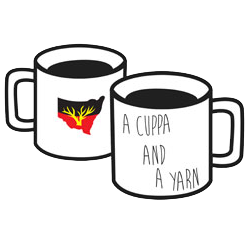25 September, 2015

I’m Sol Bellear, a Bundjalung man. I come from a little place called Mullumbimby.
Billinudgel is an Aboriginal word – it means Parrot, lots of parrots there and that’s where I grew up. I had nine in the family – five girls, four boys. We lost a sister when I was about 10, and then Bob, of course, we lost him 10 years ago. I’m proud to say I have heaps of nieces and nephews but there’s that many now that in the last 10 years every calls me “Uncle this” and “Uncle that” and I thought well I don’t know who is who anymore, so all my real nieces and nephews I just get them to call me ‘Sol’, that way I know they’re related!
I’ve worked at NSWALC as a consultant for about 12 years. I acted as Manager of the Media & Marketing Unit and in my current role I focus on strategic issues – at the moment that’s the NSWALC Election on 31 October, 2015.
My role in Land Rights goes back to before the legislation. When I first got involved politically it was with the union movement and the Builders Labourers Federation. I was an organiser and my role was to get more Aboriginal people involved. And many don’t know – it was actually that BLF and the Waterside Workers Federation that funded the Aboriginal Tent Embassy. There was something like 60,000 workers, so every fortnight they’d ask workers to take $1 of their pay towards the Tent Embassy and most did that. So we were getting something like $30,000 a fortnight, which was a lot of money back then. And it helped us get mob in interstate.
And then we started talking Land Rights. This was of course on the back of the 1967 referendum. I remember seeing Gough Whitlam and the Gurindji handback. I saw Malcolm Fraser establish the Northern Territory Land Rights legislation but it wasn’t until 1983 that the late Frank Walker, the then NSW Minister for Aboriginal Affairs (and an original Freedom Rider) and Pat O’Shane, the first Aboriginal Magistrate and the head of what was then the Office of Aboriginal Affairs, brought the NSW Land Rights legislation into being.
A number of people have inspired me internationally and nationally. Black leaders in the civil rights movement in the US including the Black Panther movement, Native Americans that still continue to fight, first nations people of Canada, the anti-apartheid movement in South Africa and Aboriginal freedom fighters that have gone before us like William Cooper, Jack Patten and Jack Ferguson as well as some of our outstanding legends that are still with us today.
When Land Rights was first won for our mob, it was about asserting our rights and traditions. Today it’s about continuing that legacy and ensuring future generations can benefit from the land. A lot of our young people seem to think we have Land Rights because it’s in the legislation. But it’s not true – we still need that fight to continue, we still need advocacy to fight for our political and social rights.
Land Rights is an evolving movement and with that comes change throughout the generations. They need to ask themselves, what are they going to do with the land? Set up an economic base? Future generations will continue to fight for Land Rights but I think it’ll be about looking at more economic, cultural and social benefits for Aboriginal people. For our fight we dodged bullets, we got beat up, were jailed and then the legislation was put in place. But it’s a different story now as we head into the NSWALC Elections on 31 October.
It’s important people use their right to vote. We never want to go back to a time when the Government chooses for us. We need young people to continue to have an active role in their Local Aboriginal Land Council to maintain the Land Rights system and continue on our fight for sovereignty so if you’re eligible to vote in the election, be inspired to have your say.

